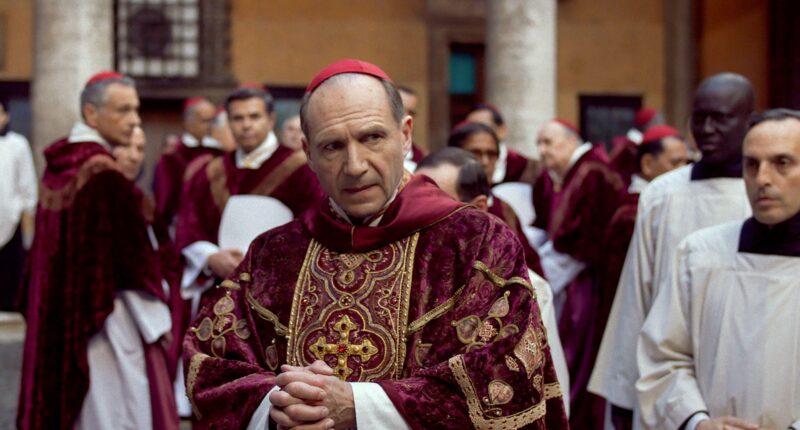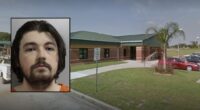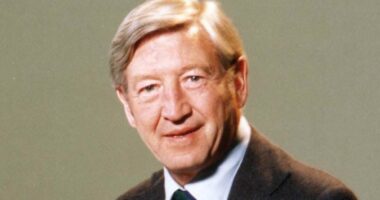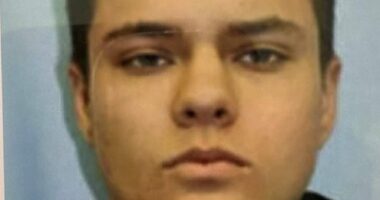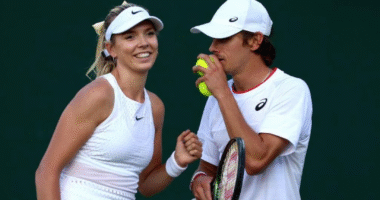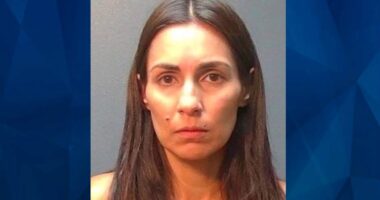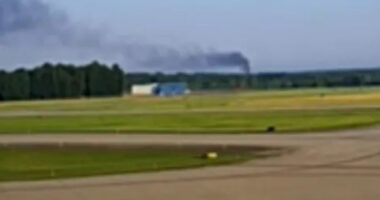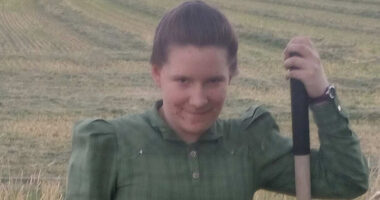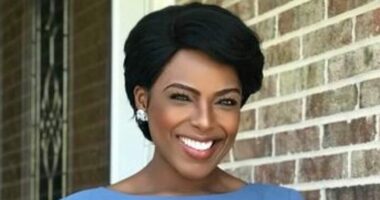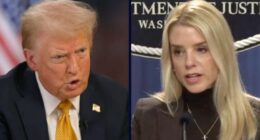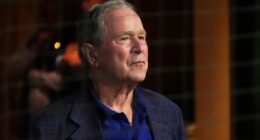WITH ruthless ambition, suspense and even spies, hit movie Conclave lays bare the fight to succeed as a new Pope.
The thriller has not only won critical plaudits, yesterday it clinched a remarkable EIGHT Oscar nominations.



Ralph Fiennes is nominated for the Best Actor award for his performance as Cardinal Lawrence, who supervises the conclave responsible for electing a new Pontiff in a closed-off environment within the Catholic Church.
The movie delves into a plot filled with deceit and manipulative tactics executed by high-ranking members of the clergy. The Vatican, in reality, operates its own clandestine service comprising individuals resembling “James Bonds in cassocks” who are trained to undertake covert missions.
In the book “Vatican Spies” authored by Yvonnick Denoel, a gripping narrative unfolds uncovering a world of espionage entwined with historical figures like Queen Elizabeth I, and entangled with modern powers including the Cold War nations, organized crime, and prominent intelligence agencies like the KGB, CIA, and MI6. The accounts recounted in the book extend to encompass astonishing financial scandals and ruthless acts of violence.
The shadowy body first came into the light in the wake of a double murder in the Vatican — when Yvon Bertorello, a young priest, claimed there was a “state within a state . . . to destabilise communist regimes”.
He said: “Diplomacy was often used as a cover. In reality, it was a net-work of intelligence agents.
“Some of them might have use for the cassock but they were nevertheless not in Holy Orders.”
This would become one of the Vatican’s most notorious scandals but, like the Devil himself, its secret intelligence arm has had many names over the years.
It comes under the umbrella of the Secretariat of the State, which is based in the Apostolic Palace in the Vatican City.
Major scandal
The governing body of the Catholic Church, it houses various branches — including the famous Swiss Guards known for their elaborate uniforms, and the Vatican’s police force called the Vigilanza or Gendarmerie.
Within the Vigilanza, which is mostly staffed by former Italian cops and intelligence agents, are secret-service units that bug phone lines, monitor mail and tail suspects.
There are around 120 officers, including plain-clothes detectives and close-protection officers, whose jobs are to make sure the Pope remains safe, not least after assassination attempts in the past.
The origins of this secretive body, however, can be traced to the Catholic Church’s battle with Protestant England in the 16th Century and, more particularly, Queen Elizabeth I.
Pope Pius IV appointed a spy master, Antonio Ghislieri, who would become known as the “shadow Pope”, to build up an intelligence network to combat the Church’s enemies including England.
Ghislieri would later become Pope Pius V and would set up a formal spy agency called the Holy Alliance.
[Priests were trained in] wrestling, athletics, open-combat, firearms training and . . . parachuting
From the Russicum programme
In the 19th Century, the Papacy realised it needed to once again fire up a formal intelligence agency to counter all the revolutions sweeping Europe and the Americas.
But it was only when Pope Pius X set up a new network of political spying, called the Sapiniere, in 1903 that the Vatican would assume an increasingly central role in the world of international intelligence.
Initially, it was designed to recruit agents and informers, intercept mail, follow suspects and purge anyone viewed as a threat to the Catholic Church’s conservative ideology.
But it was not just the Vatican doing the bugging and spying. It, too, became the target of foreign intelligence services.



In World War One, the Vatican had to cover up a major scandal when it emerged that Pope Benedict XV’s key aide was a German agent.
During the rise of fascist Italy, Mussolini monitored Vatican mail and tapped its phone lines.
The Pope’s policemen, mostly recruited from retired Italian officers, allowed fascist cops access to private quarters of foreign ambassadors to the Vatican, to steal their secrets. In 1929, the Vatican struck a deal with the Mussolini government, which involved setting up networks designed to infiltrate the USSR.
The downfall of communism would become the Church’s primary aim up until the Nineties, and saw it build alliances with many Western intelligence services, including the CIA, MI6 and French secret services.
This became increasingly important, as the Americans and British realised they were often “blind” in the Soviet Union, which ruthlessly flushed out spy networks and monitored Western diplomats.
The Holy See began to assume an ever bigger role as the Cold War unfolded after World War Two.
The Western powers realised that in the Church they had an informal network of information thanks to local priests.
They would collate reports on the local social, economic and political picture in their parishes which would, eventually, be filtered back to the Vatican’s Secretariat of State.
In 1930, ambitious Vatican official Eugenio Pacelli became the Secretary of State and set up what became known as Russicum, to resist communist oppression in the USSR.
This would, in time, take an extraordinary turn after Nazi Germany and Japan had been defeated and a new cold war would emerge.
In 1949, a US military plane took off from Western Germany carrying two members of the anti-communist Ukrainian resistance and two unknown men, all with parachutes.
After travelling over East Germany and Poland, the plane descended over Ukraine to 650ft before the men jumped out.
Remarkably, the two unknowns were Catholic priests-cum- missionaries, part of a Russicum programme that trained priests in “wrestling, athletics, open-combat, firearms training and . . . parachuting”.
For the next five years, dozens of priests, courtesy of CIA and MI6 training, were ferried into the Ukraine in this way.
Espionage paradise
A French intelligence report described Russicum as a “true ‘action division’”, which helped the French infiltrate Eastern Bloc countries.
The CIA helped forge the required ID for agent priests, who were also expected to develop their own false identities and backstories.
There were more spies in the Vatican than in James Bond films.
Tomas Turowski, former spy turned Polish ambassador
But in 1954 the programme ended when it emerged the Soviets were rounding up these agent priests at a prolific rate.
Meanwhile Pole Karol Wojtyla, who would eventually become Pope John Paul II, was trained and ordained in complete secrecy in Communist Poland.
When he became the first non-Italian pope for 450 years in 1978, his target was communism. He immediately beefed up the Vigilanza and within this was a special secret unit that carried out black ops.
The Pope himself would become increasingly confrontational with the Polish regime.
Much later, Tomas Turowski, a former spy turned Polish ambassador, would remark that during John Paul’s reign, “there were more spies in the Vatican than in James Bond films”.
He added: “One priest, whose code name was Russian and who transmitted news to the Polish services, worked until recently in the Vatican for Pope Francis”.
John Paul II’s reign was an espionage paradise as it brought together an unholy combination of murder, the Mafia, financial scandal and secret Catholic orders, plus the Cold War.
In 1998, Alois Estermann, head of the Swiss Guards, and his wife Gladys Romero, were found shot dead in their Vatican flat, alongside the body of a Swiss Guard called Cedric Tornay.
It was alleged Estermann was an East German spy who had been having an affair with bisexual Tornay before the pair split acrimoniously.
The Vatican declined offers of help from Italian police and kept the probe in-house. while the young victim’s family was convinced of a cover-up.
Tornay’s mother, however, said she had met whistle-blower Bertorello by the casket of her dead son and that the murder was “all his fault . . . he even said my son had been murdered”.
She alleged Bertorello had claimed the dead guard was investigating Estermann’s links with the secretive Opus Dei sect, long seen as a malign influence within the Church.
Bertorello would later tell an Italian journalist, using an assumed name, that the Vatican had, under John Paul II, set up a “closed network” of cells around the world, made up of intelligence agents.
These were, he said, recruited from priests, universities or paramilitary organisations.
Bertorello said he had undergone four years of training as part of this network — during which he was taught codes and ciphers by a Polish priest, secret photography by an Italian priest, while the Italian Army trained him in parachuting.
The message was that the Vatican’s James Bond network was neither shaken nor stirred by the war’s end.



